![]()
| Google Pixel XL Display:5.5-inch 2560 x 1440 AMOLED display with 534 pixels per inch OS: Android 7.1 Nougat Processor: 2.15GHz + 1.6GHz Snapdragon 821 64-bit quad-core processor Memory: 4GB RAM, 32GB or 128GB (no microSD card slot) Camera: 12.3-megapixel standard rear camera with electronic image stabilization, 8-megapixel front-facing Video: Up to 4K Ultra HD video recording Battery: 3450mAh (non-removable) Connections: LTE, Wi-Fi, Bluetooth 4.2, A-GPS, NFC, Fast Charging, USB-C, Fingerprint sensor Dimensions: 6.09 x 2.98 x 0.34 inches Weight: 168 grams Comes in black and silver |
In a year where some smartphones have surprised, while others have spontaneously combusted, Google’s latest entry into the fray is in the two Pixel handsets that have effectively replaced the previous Nexus line. Going higher-end under the Pixel moniker is one of the obvious differences, but with performance and a new virtual assistant being hyped alongside all that, there was plenty to look forward to with the Pixel XL.
There are more Android mobile devices out there than one can probably count, but in the Pixel XL, we have what may be the closest marriage of Android hardware and software to date. Google said nothing about any hardware partners in designing and developing the Pixel XL (and smaller Pixel), though we do know HTC had a hand in helping out with that. The point is, this is every bit a Google phone, and the company wants to stamp that beyond just the branding.
Design
Nexus phones had been going through an evolutionary process that saw devices improve in design over the last few years. The Nexus 6P was certainly more of a high-end device than the Nexus 5 two years prior, for example. The emergence of the Pixel and Pixel XL does away with all that, pitting Google in flagship territory, where the likes of Apple and Samsung have been.
Glass and metal forge the phone’s body, giving it a level of elegance Nexus devices simply didn’t have before. Seeing it in photos was one thing, but when I unboxed it, I could appreciate the look and feel. My one sticking point, however, was the unseemly transition from glass to metal on the back. It just looks a little strange, like the top-third has been bandaged. Mind you, my review unit is the white model, so this contrast is readily apparent. The black one might be different.
The fingerprint sensor, officially called Pixel Imprint, stands out on the back, and was easy to set up, similar to how it was on last year’s Nexus devices. It’s also highly responsive.
The 5.5-inch AMOLED display is gorgeous, and the refinements made to Android 7.1 Nougat help with that. Vibrant and crisp, it didn’t take long for me to appreciate how easy on the eyes it truly is. I believe the neutral colours help, because the gamut doesn’t seem overly saturated, similar to how Samsung’s take on Super AMOLED has been in the past. No matter what I was doing on the screen, I couldn’t take my eyes off it.
Being pretty is nice, but I was glad to see Google didn’t hold back on cramming what it could underneath. The Snapdragon 821 processor helps the Pixel XL zip through basic navigation and overall performance, giving the phone a feeling of getting things done. Having 4GB of RAM doesn’t hurt, and 32GB or 128GB of internal storage is nice too. The lack of a microSD card slot is worth noting if storage options matter to you, which is why I would err towards the larger storage capacity.
I’ll get into the camera further down, but given the lofty claims of being “the best smartphone camera, ever,” there was plenty to scrutinize on that. The 12.3-megapixel image sensor with electronic image stabilization and an f/2.0 aperture has tough competition this year.
Google Assistant
![]() The linchpin of Nougat 7.1 is undoubtedly the Google Assistant software baked into it. For now, Google says the Pixel phones will be the only ones to offer it, so this is a unique feature for the time being.
The linchpin of Nougat 7.1 is undoubtedly the Google Assistant software baked into it. For now, Google says the Pixel phones will be the only ones to offer it, so this is a unique feature for the time being.
What it does, however, is portend what may be coming in the near future as far as artificial intelligence (AI) in mobile devices goes. The obvious comparison is to Apple’s Siri or Microsoft’s Cortana, both of which have real strengths, but I came away feeling something different with Google’s platform. After training it to know my voice by saying “OK, Google” three times, I could trigger the Assistant anytime by just saying that.
It is quite good at recognizing conversational language. I asked questions or made requests as if I was talking to a person. In most cases, it understood and did its best, whereas in other cases, it misinterpreted or couldn’t do much because of how the question was phrased. That last part is a big hurdle any voice assistant has to jump over, because the variables in everyday speech can mean the difference between a smooth task and an annoying back-and-forth.
When it gets it right, it’s a pleasure to use. For example, one thing I liked to do was ask it to recite famous or interesting quotes, which it would pluck randomly from the Internet. Note that I said it would recite them, meaning it read them aloud. Siri and Cortana don’t do that. It even does poems or The way emotions and feelings can be tied to results is intriguing, though we are a long way off from any of it being proactive or precise.
Case in point, I told it I was feeling tired or sad to see what would happen. It suggested I get some rest, and for sadness, suggested a joke or music to lighten the mood. Some of the jokes I heard were clever, whereas others on the corny side, but it was still neat. A music playlist from Google Play Music could also be sourced based on an emotion.
What’s sorely missing is app integration. Some of it is already baked in with Google’s own apps, but not always. For example, I could tell it to play music (not a specific song though) from a specific artist on Spotify, but not on other apps, like SoundCloud. I could easily get directions to go somewhere on Google Maps, yet astonishingly not on Waze (which Google owns). It’s early, so tying these things together is probably a matter of time, but to make this even more of a game-changer, it needs to do that.
As is, using Google’s apps helps get more out of it. As an example, asking it about your day in the morning will give you a rundown on the time, appointments, traffic, weather and even a radio station on TuneIn, like it did with me once. That was pretty cool.
How long Assistant stays as a Pixel-only feature remains to be seen, but for now, it’s off to a pretty good start.
![]()
Performance
This is undoubtedly the best marriage of hardware and software on an Android device to date. It feels like the kind of tight integration iOS devices have been known for, thanks in part to the premium build on the outside, and fluid software on the inside.
It’s a zippy phone, to say the least. Simple navigation around the operating system feels like smooth sailing every time. The app drawer that swipes up from the bottom is one of those tweaks that should’ve been done years ago. The Google Now and search bar that swipes from the left to right is somewhat familiar, yet it feels different anyway.
I came away feeling fine with the fingerprint sensor, not really noting it to be any better or worse than the others. Being in the back, it’s challenging to wake up the phone when it’s lying flat on its back. Double-tapping on the screen would’ve been a nice workaround, except it’s not included. Double-pressing the home button is a shortcut for launching the camera. Sliding down on the sensor in the back checks notifications. Twisting the phone in hand switches from rear to front cameras for selfies when in the camera app (shades of Motorola’s gesture).
A 24/7 direct support line to Google for tech support via phone or live chat is one of those additions that could make a real difference. To sweeten things further, Pixel owners get free unlimited storage in full resolution for all their photos and videos on Google Photos. While it is free on other Android devices, the images aren’t saved at full-res.
Camera
Proclaiming this to be the best smartphone camera — albeit based on a rating from a third-party tester — was probably overreaching. I admit I’m a little tough on camera performance with phones, and I can definitively say this is not the best out there. It is one of the best, especially in certain situations, but not the best overall.
What it does well is shoot crisply in good lighting, capturing colours in a way that I haven’t always seen in other handsets. The electronic image stabilization is surprisingly good at keeping images sharp in spite of hand jitter. Focusing is fast, and exposure control is right there to make quick adjustments.
For whatever reason, the white balance skews a little too much, making white look more like yellow, particularly indoors. It’s a little strange, and while it doesn’t always happen, it can be annoying when shooting something that has a lot of white in the shot. A software update can likely fix that from happening in the first place, so I’m going on the assumption that Google will do something about it sooner than later.
As great as daylight shooting is, night and low-light shots are more of a mixed bag. By default, HDR+ is on because there is more onus on software doing the work to produce great images, whereas it has traditionally been on the hardware components. The Pixel XL produced noise in the darkest areas of low-light shots — something that I suspect would have been reduced if it had a wider aperture. What I’m not sure about is whether there is software magic that may be able to reduce that in spite of the f/2.0 aperture.
This isn’t to say that the quality is average. It’s better than that for sure. Even without a manual mode to better control how photos could turn out, I found the camera grew on me over time. Even features that I feel are a little gimmicky, like Lens Blur, are actually better than I would’ve expected.
I asked myself: would I trust this camera to be my point-and-shoot on a vacation somewhere? Absolutely.
![]()
Battery life
The Pixel XL has a good battery that offers decent performance, but I would hesitate to consider it exceptional under the circumstances. Doze mode, a feature first rolled out with Android 6.0 Marshmallow, works in various ways to reduce battery life. It’s great in standby, where percentage points barely move, but the more you use the device, the less any battery saving features come into play. I was able to go a full day with this phone, though heavy usage did takes its toll.
The fast charger that claims to offer seven hours of usage after only 15 minutes of charging is basically true. The seven-hour total depends on what you’re doing, but it’s great to see that 15 minutes is all that’s required to get some significant use out of the phone.
Final Thoughts
Elite Android phones aren’t novel products. Other vendors have made them already, but the Pixel XL looked and felt different because of the synergy I felt when using it. It felt like the software was designed for the device itself, and that the hardware was made to make the software run like a dream. When a phone feels like it’s capable of doing anything any other one can do, you have a very compelling handset. That’s the Pixel XL in a nutshell.
The Pixel XL is available now in black and silver.

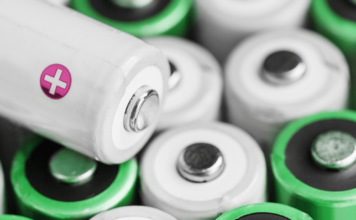
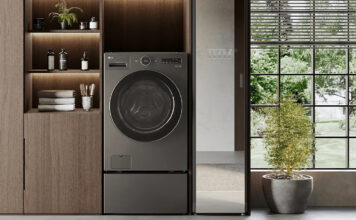












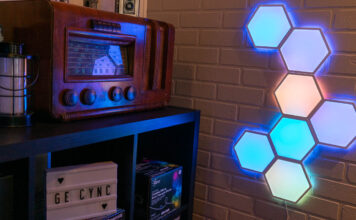
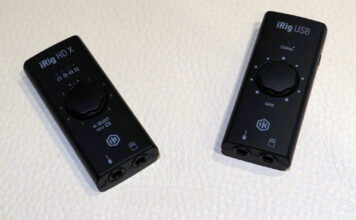



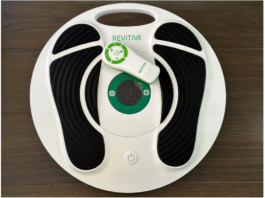

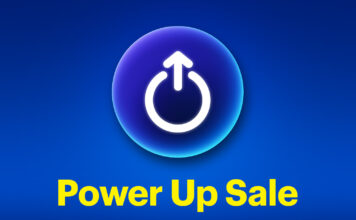




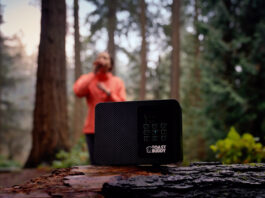
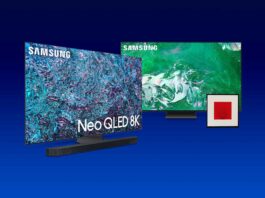



















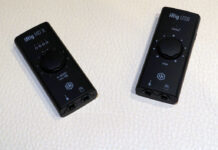

Five years ago when I got my first smart phone, I went with the Apple iPhone 4. I got my phone just before the 4S came out. Despite many of the features that android phones have, including this new Google Pixel XL, I am now fully adapted to the iPhone. I like many of the features of android phones, but only one thing will ever make me leave Apple. That one thing is, should Nintendo ever release a smart phone I would immediately jump ship and switch over to that!
Comments are closed.